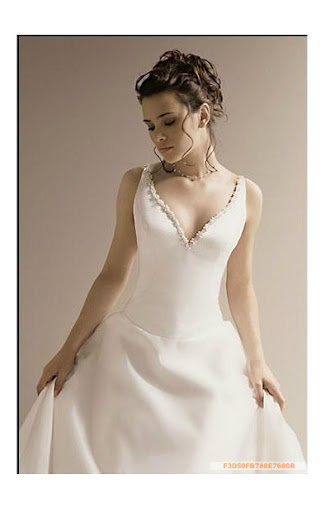You will often see the moniker "cheap wedding gown". Just what's considered a cheap , and are they bad dresses all the time, sometimes, or not at all?
Start with price. Basically, a gown can be anything that costs $1,000 or less. That may seem high still, but it depends on the dress, the designer, and where you're buying it from. For instance, if your purchasing a Vera Wang that's 5 years old and it costs you $1,000, whereas buying one new would have cost you $3,800, then by definition that's a cheap. It's still quality, but it's obviously not new anymore, and may have had more than one owner, so it has lost some of its value.
The next thing to consider are the materials used to make them. There are plenty of knockoff that follow the patterns of top designers that might be made of materials that aren't of the same quality that the big designers will use. Maybe instead of silk organza is made of some type of cotton or even satin. Maybe the embroidery isn't all that fancy. Or maybe someone has used beads instead of Swarovski crystals. These types of things would make the dresses cheaper, but not necessarily bad, worthless dresses. They would still look fabulous; they would just cost a lot less.
Something else that helps create is that some designers contract with shops and stores to create multiple copies of lesser designs, which brings the price down. This allows for someone to be able to say they have a designer dress without having to pay top price for it. Most customers know these aren't the top of the line dresses, especially if they're brand new, because today's savvy customer has looked online and seen the top designs on their favorite designer's websites. But they're still happy to have a dress that followed the pattern of a top designer.
Overall, cheap doesn't always mean badly made. Of course there are some badly made dresses, but you won't usually find those on discount dress sites. Where you'll find those dresses are at sites where someone offers to make a designer dress for under $400 based on a designer's pattern. To make a profit, they may skip steps, including complete stitching to make sure the dresses are reinforced. [via]
Start with price. Basically, a gown can be anything that costs $1,000 or less. That may seem high still, but it depends on the dress, the designer, and where you're buying it from. For instance, if your purchasing a Vera Wang that's 5 years old and it costs you $1,000, whereas buying one new would have cost you $3,800, then by definition that's a cheap. It's still quality, but it's obviously not new anymore, and may have had more than one owner, so it has lost some of its value.
The next thing to consider are the materials used to make them. There are plenty of knockoff that follow the patterns of top designers that might be made of materials that aren't of the same quality that the big designers will use. Maybe instead of silk organza is made of some type of cotton or even satin. Maybe the embroidery isn't all that fancy. Or maybe someone has used beads instead of Swarovski crystals. These types of things would make the dresses cheaper, but not necessarily bad, worthless dresses. They would still look fabulous; they would just cost a lot less.
Something else that helps create is that some designers contract with shops and stores to create multiple copies of lesser designs, which brings the price down. This allows for someone to be able to say they have a designer dress without having to pay top price for it. Most customers know these aren't the top of the line dresses, especially if they're brand new, because today's savvy customer has looked online and seen the top designs on their favorite designer's websites. But they're still happy to have a dress that followed the pattern of a top designer.
Overall, cheap doesn't always mean badly made. Of course there are some badly made dresses, but you won't usually find those on discount dress sites. Where you'll find those dresses are at sites where someone offers to make a designer dress for under $400 based on a designer's pattern. To make a profit, they may skip steps, including complete stitching to make sure the dresses are reinforced. [via]



No comments:
Post a Comment